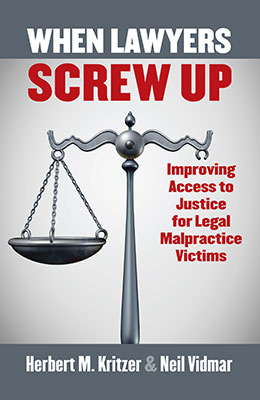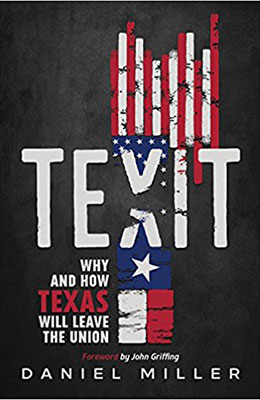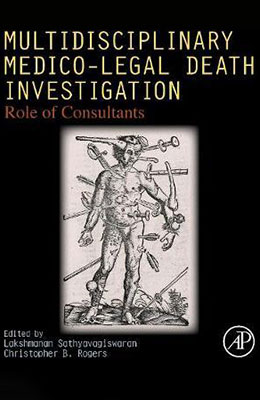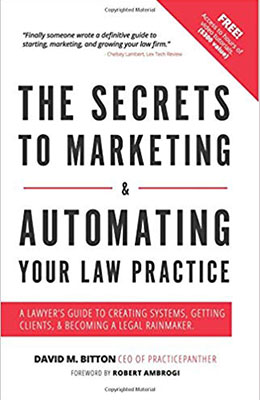 VERDICT: It’s a Keeper
VERDICT: It’s a Keeper
When Lawyers Screw Up: Improving Access to Justice for Legal Malpractice Victims
By Herbert M. Kritzer & Neil Vidmar (Lawrence, Kan.: Univ. Press of Kansas, 2018). 248 pgs. $45. Order, www.kansaspress.ku.edu.
Reviewed by Dianne Post
I wasn’t particularly keen to read this book, but to my surprise, it turned out to be quite interesting. First, both authors are not lawyers though they are law professors. One is a political scientist, the other a social psychologist.
Though little information is available, lawyers’ professional liability (LPL) is big business, with thousands of claims made every year and revenue of $276.6 billion in 2012. Lawyers pay $3.5 billion for insurance, while doctors pay $5.6 billion. LPL has two very different parts depending on whether the firm is a solo or small firm or a large corporate entity.
According to the authors’ research, on average, there were 1-6 claims per 100 lawyers, with the average amount of payout ranging from $5,000 to $20,000. Only one-third of claims resulted in payments and of those, two-thirds were under $5,000. Eighty percent of the claims were against solo or small firms (two to five lawyers) and one-half were in personal injury or real estate, but surprisingly two-thirds were against lawyers in practice more than 10 years.
The book outlines the basis for liability and includes many examples and individual stories as well as interviews with lawyers who practice LPL cases, mostly in insurance defense firms. The authors outline the problems in proving an LPL case, including that if an error of judgment is the issue, an expert must testify that the behavior was below standard, which adds to the cost.
According to the authors, the most common errors were missing deadlines and improper handling of title or real estate matters. Most large-firm errors were related to corporate or transactional matters and litigation work related to securities, intellectual property, project liability, and major consumer claims. The main kinds of errors were administrative, substantive, client relations, and intentional wrongs. The three top types of errors were missing a deadline, math mistakes, and losing a file.
The percent of claims that actually become lawsuits ranged from 6 percent to 31 percent, with corporations, criminal defense firms, and local governments being the most likely to be sued. For claims that went to litigation (only 3 percent of claims), payments were actually made in 20-40 percent of the cases. If the case arose after the lawyer tried to collect a fee (9 percent), the lawyer was more apt to win the case. Lawyers also tended to do better with bench than jury trials.
If there was insurance, almost all claims were resolved below policy limits with a big fluctuation in the amounts. There were larger payments for large firms, corporate work, civil rights violations, and conflict of interest or planning or strategy errors. For the type of error, substantive error claims paid out the most money.
The authors view this data, or lack of it, as a problem. Their suggested solutions are mandatory insurance (only Oregon requires it in all cases), a legal ombudsman, other dispute-resolution mechanisms, one-way fee shifting, noneconomic damages for nonfinancial harm, application of the loss-of-chance doctrine like a contributory negligence scheme, and extension of statutes of limitation. Lawyers encourage other people to have insurance – lawyers should have it, too.
Dianne Post, U.W. 1979, is an international human rights lawyer. She practiced family law in Arizona for 18 years, mostly representing battered women and molested children, and then in 1998 began doing international work mainly on gender-based violence.
Want to Review a Book?
Please request a book and writing guidelines from Wisconsin Lawyer managing editor Karlé Lester, at klester@wisbar.org or (608) 250-6127. Reviewers may keep the book reviewed. Reviews of about 500 words are due within 45 days of receiving the book. Reviews are published, space permitting, in the order received and may be edited for length and clarity.
 VERDICT: Not for Me, Maybe for You
VERDICT: Not for Me, Maybe for You
Texit: Why and How Texas Will Leave the Union
By Daniel Miller (Conroe, Texas: Defiance Press & Publishing, 2018). 267 pgs. $15.36. Order, www.amazon.com.
Reviewed by Aaron P. Frederickson
Over the last four years, I have come to know Texas a bit better, given my frequent trips to Fort Worth to visit my oldest daughter, who attends Texas Christian University. In this time, I have become more familiar with what makes Texas, well, Texas. Maybe that is why I was drawn to this book.
This book serves as a manifesto for Texas leaving the United States and once again being an independent nation. While this movement does have its fringe elements, it has gained legitimacy given recent calls for “Calexit,” a push for California to amend its state constitution and take affirmative steps to separate from the United States.
Daniel Miller details the origins of Texas (and the Texas spirit), its attachment to Mexico, and later revolution. The plot thickens as this young nation struggled financially, joined the United States, got caught up in Confederate succession, and eventually “rejoined” the Union following the Civil War.
The underlying theme for Miller’s argument is that “someone’s attitude toward Texit is often directly tied to his or her understanding of the American Union. If one understands that it is based on a fundamental ignorance of the original purpose of the United States, then they will likely oppose any discussion of Texit at a visceral level. If, however, one understands the true origin and purpose of the United States, then they can clearly see how vastly today’s American Union has strayed from its original course and then Texit becomes a discussion that must be had, not only for Texas, but for every state in the United States.”
Miller advances his argument based on the creation of West Virginia. As many Americans likely are not aware, after Virginia left the Union to join the Confederacy, some poor state residents, who did not necessarily own slaves, separated from Virginia and were granted statehood while the United States was at war. The author says this outlines a process for legal succession in light of post-war Reconstruction, reconciliation, and Texas v. White, 74 U.S. 700 (1869).
The book also advances arguments how this can be accomplished given many modern-day issues such as trade, travel, banking, defense, and more important, the process to do this without another civil war and accusations of treason.
As a political junkie (and someone addicted to Horned Frog football – enthralled by the exploits of Andy Dalton and Tank Carder in the 2011 Rose Bowl), this book might be for me, and not for you. It contains some deep philosophical and constitutional arguments that would make it better suited for an upper-level political science class, versus something one would read on the beach.
Aaron P. Frederickson, William Mitchell 2002, operates MSP Compliance Solutions, Lino Lakes, Minn.
 VERDICT: It’s A Keeper
VERDICT: It’s A Keeper
Multidisciplinary Medico-Legal Death Investigation: Role of Consultants
Edited by Lakshmanan Sathyavagiswaran & Christopher B. Rogers (Cambridge, Mass.: Elsevier, 2018). 379 pgs. $125. Order, www.amazon.com.
Reviewed by Richard Ebbott
Medical examiners’ and coroners’ offices are charged with the duty to examine human remains and make certain findings. These might include 1) the identity of the remains, 2) the time of death, and 3) the cause of death. Did death result from natural causes? If not, was the cause a homicide, an accident, or a suicide? We can all envision legal issues that require these determinations. Homicides and accidents can result in criminal and civil liability. Suicide might have insurance consequences. The medical examiner or coroner could also help in the prosecution (or defense) of a person charged with the death.
When I was an assistant district attorney in Rock County (deep in the last century), we prosecuted a first-degree murder case where two individuals were both shooting at the victim but from different distances. Their guns had the same caliber, and the angles were about equal. The defendant on trial hired the former head of the State Crime Lab, who had developed a soft x-ray test to prove the other guy did it. Had this book existed at the time, we would have had pages of tests, explanations of the expertise involved, illustrations, and many references to help prove our case. (We obtained a conviction anyway.)
This book contains contributions from 26 author-consultants who discuss various specialties and how their input can aid the medical examiner-coroner. Cardiology, pediatrics, radiology, surgery, psychology, odontology, anthropology, eye pathology, firearms, and envenomations (look that one up) are among the contributors’ areas of expertise. The book also covers high-profile cases, quality assurance and peer review, business continuity, and use of experts.
Several of the chapters on specialties contain sections defining the role of that specialist as a consultant to the medical examiner-coroner. For example, there is a list of 10 ways a radiologist might help in infant death cases, and seven reasons to hire a radiologist for adult death inquiries. Many chapters also contain photos, charts, graphs, tables, and other illustrations to help the reader understand the role of the expert. An extensive list of references is also included.
So, who can benefit from this book? Large medical examiner-coroners’ offices should have a copy. Large district attorney and state prosecutors’ offices also could find the book useful. And perhaps medical schools, law schools, and forensic science programs should stock it as well. For the rest of us, the knowledge that the book exists could be helpful in a particular case.
Why didn’t I rate the book a touchdown then? Neuropathology is so important to these inquiries that I would have appreciated at least a list of references on the topic. And because the editors requested that the State Bar of Wisconsin review their book, I’m doing so from a lawyer’s perspective. A list of reasons why each particular specialty might be consulted in a given case would be very helpful to us. Albeit that, it’s a keeper.
Dick Ebbott, U.W. 1967, was an assistant district attorney in Rock County from 1967 to 1970. Since 1971, he has maintained a civil trial practice in Michigan.
 VERDICT: It’s a Keeper
VERDICT: It’s a Keeper
Corner Office Choices: The Executive Woman’s Guide to Financial Freedom
By Bridget Venus Grimes (Lioncrest Publishing 2018). 259 pgs. $15.99. Order, www.amazon.com.
Reviewed by Lori Kornblum
Corner Office Choices is a well-written, easy-to-read resource directed at women executives and attorneys who are in the top one percent of wage earners but are basically unhappy with their lives. They are looking for change. Bridget Venus Grimes, founder and president of WealthChoice, www.wealthchoice.com, and a certified financial planner, makes no bones about her intended audience and her client base.
Why is this book worth reading even if you are not in her intended demographic? Grimes provides a different perspective than much other financial planning advice. First, she focuses specifically on women, and how the choices that women tend to make throughout their careers – or their failure to make choices – trap them in a life they might not love. She calls these choices “derailers.” These include choices imposed on women, such as having a family, as well as choices they make through ignorance, such as being poor negotiators and expecting that doing a job well will bring success and advancement. The book has a lot of anecdotes from Grimes’ own practice and is grounded in solid commonsense advice, useful for even the vast majority of people who are not in the top one percent.
Grimes starts with a theme, that financial planning is not just about retirement and is not something that even the wealthiest women should outsource. Having a solid financial plan is part of a life plan.
She then establishes a four-step process for financial planning. First, set life goals. The life goals should dictate the career, not vice-versa. She advocates hiring someone (like her) to help establish those goals, which might take years, but she also provides solid resources to do so in the book’s appendix.
Second, Grimes recommends looking at cash-flow management. Again, the appendices provide good tools for this. While most financial planners focus on a budget with the goal of increasing income to get what people want, Grimes is in the unusual position of having clients focused on how they can possibly live a happier life with a reduced income. For this, they must figure out how to manage their cash flow to save money (instead of spending on just about everything) so they can learn to live like the rest of us.
Third, Grimes says women need to look at business and career management, which may involve a career coach and various business consultants. Again, one can either hire someone to assist or use some of Grimes’ tools.
Finally, women should hire a CPA to maximize tax benefits.
After doing these four steps, which may take years and lots of consultation, women can implement the plan and presumably have a happier life, with a career that is fulfilling because it serves life goals.
This is not a one-size-fits-all book, but a book about process and planning. So even for the 99 percent of the world that does not fit within Grimes’ target audience, the book provides useful food for thought and helpful tools.
Lori S. Kornblum, Boalt 1982, is an adjunct faculty member at Marquette University Law School and an instructor at Milwaukee Area Technical College (Paralegal Department) and has a private practice in Mequon.
 VERDICT: Not for Me, Maybe for You
VERDICT: Not for Me, Maybe for You
The Secrets to Marketing & Automating Your Law Practice: A Lawyers Guide to Creating Systems, Getting Clients, & Becoming A Legal Rainmaker
By David Bitton (PracticePanther Inc. 2018). 262 pgs. $6.70. Order, www.amazon.com.
Reviewed by David Krekeler
The Secrets to Marketing & Automating Your Law Practice is a collection of essays by various authors. The cover states that the author is David M. Bitton, chief executive officer of PracticePanther. PracticePanther is a legal management software company and is plugged throughout the book. Bitton is the author of six of the book’s 24 chapters.
The first five chapters are devoted to starting and growing a law firm. They include lots of ideas and information about creating a website. They include other marketing ideas, as well as systems and practice management topics.
The second section of the book is devoted to social media, marketing, and search engine optimization (SEO). It deals with and includes information about websites. Some of the chapters do not apply to my practice, but they still provided food for thought in future development. For example, chapters on Facebook and Evernote are not topics I need or want to develop at this time. They may very well be useful for other lawyers, though.
The book’s third section is devoted to law firm productivity and automation. Included are chapters on Outlook, Evernote, and Microsoft Word, along with an essay on e-discovery.
The final section of the book is titled “Protecting Your Firm.” I did not feel it delivered on that title. The chapter on avoiding billing mistakes and fee disputes is only three pages long and barely scratches the surface of the many things lawyers can do.
The topics in the book are good, but the presentation seems disjointed. Perhaps having an editor coordinate the various authors and their essays would have helped. The same topics crop up in various sections of the book, and many ideas are repeated by more than one author. Some of the topics, such as having an eco-friendly practice, seemed totally out of place.
The book, though, has value for lawyers. I came away with a lot of ideas, some to consider now and others in the future. You should approach this book essay by essay, rather than as an evening’s read by your fireplace. It is an easy read and worth your time.
David J. Krekeler is a debtor-creditor attorney and shareholder at Krekeler Strother S.C. who not only talks marketing for lawyers but lives and breathes it.
